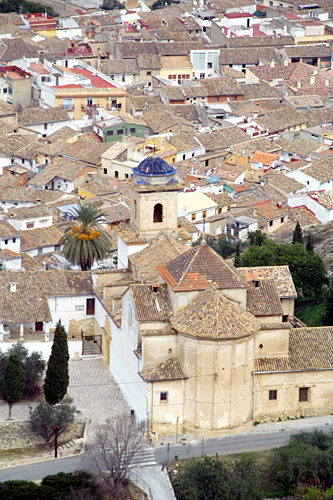This weekend we took our first trip to Xàtiva, a small city of almost thirty thousand about 50 minutes south of Valencia. I’m sure we’ll be going back — easy to reach with the C2 short distance train, Xàtiva has a ton to offer.

Natives have a couple different nicknames: setabenses (which stems from the Latin name for the city, Saetabis) and socarrats, which approximately means “the burnt”. This interesting moniker dates from the War of Spanish Succession when Xàtiva was destroyed and kept aflame for 8 days by King Felipe V. The marauding troops slaughtered the women and children seeking shelter in the church of San Augustín, and even renamed the city “The New Colony of San Felipe”, which is so dastardly, it’s almost comical. Nowadays, wherever you find a portrait of Felipe in Xàtiva, it’s likely to be upside down.
For years, Xàtiva had fame as the European birthplace of paper. The most famous family to come from the city — and probably the most infamous family in Valencian history — was the House of Borgia. Through any number of crimes, including rape, murder, adultery, bribery and theft, they rose to unspeakable heights of power and two family members even became pope: Alfonso & Rodrigo.
The touristic highlight of Xàtiva is the incredible castle which was built by ancient Iberians and populated by all of the city’s subsequent rulers, including the Borgias. We’ll be posting about that later, along with some photos of this fantastic little city.
From Valencia’s main train station, a round-trip ticket with Renfe Cercanías C2 to Xàtiva costs €6,90 (as of date of writing) and takes about 50 minutes.
Pingback: Palace of the Marquis de Dos Aguas | Hola Valencia Blog
Pingback: Day Trip to Xàtiva | Hola Valencia Blog
Pingback: A UFO in Xàtiva? | Hola Valencia Blog
Pingback: Hola Valencia’s Top Five: Day Trips